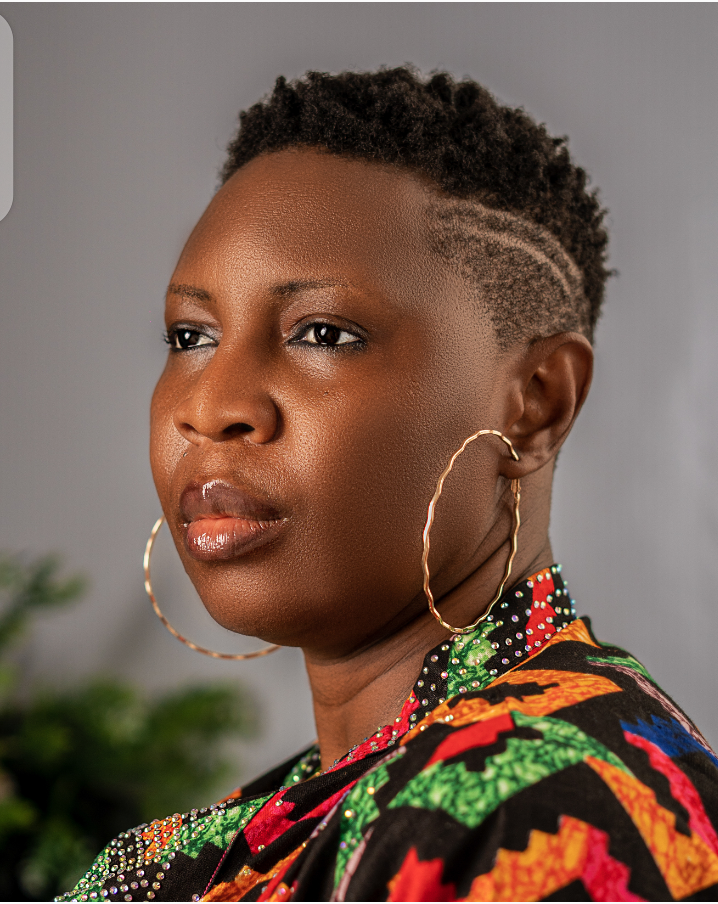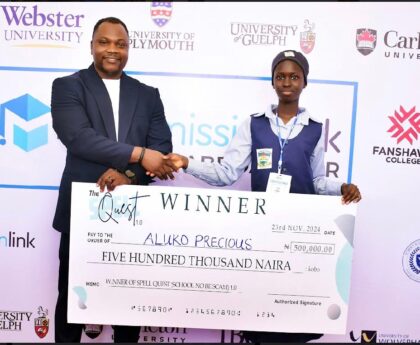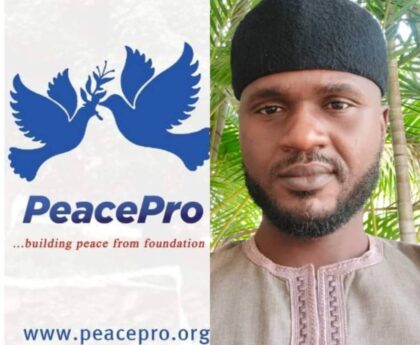Mrs Mary Oladimeji Ajado, popularly known as MOAJ, is a professional photographer and a visual artist with a two-decade practice in hotel and catering management. In this interview with Adeyemi Adewale, the Chief Executive Officer of MOAJ Media Consult, speaks on her journey into visual arts and what inspired the maiden Solo Exhibition billed to hold at the Ilorin Innovation Hub, on Saturday, September 13, 2025.
Fact Courier: You were into catering for about two decades, how then did you find yourself in photography today?
Ajado: I have always loved media, even when I was in the catering space. I delved into Television and Radio production years back. In fact, I had a program on Harmony FM then, ‘Rhythms of Life.’ I ran it for a quarter. And we couldn’t continue because we looked out for sponsorships here and there. And I wanted to maintain the quality of the content. The value of that content as at that time, I wanted to maintain it. So God willing, if I hit big money more than now, I might still go back to doing that. So I’ve always had that eye for media. Somehow, I knew I was going to end up there. But I felt like, okay, make we go hustle small. Catering was something that kind of found me too, and I ran that business. I was in that space successfully.
Fact Courier: We are in Nigeria, and when you say catering, we know how it works. In fact, some people will not see it as something that someone like you can do and be successful in. Most prefer to be professionals in a corporate world. For a young person coming into the catering space, what would be that advice?
Ajado: My advice to anybody coming into anything, be it catering, media, medicine, anything, my advice is have a goal and have passion for what you do. I think one of the things that has really helped me in every space I’ve found myself, either catering or media, is my genuine love for people. And I noticed that that thing gives me a kind of speed, because you are not dealing with inanimate objects, you are dealing with humans that have emotions. And you see, every human being can sense it when whatever it is that you are doing with them. Once they sense it has a superficial thing, they won’t really go all out. But if you have that genuine love for people, it will give you an edge, either you’re in medicine, catering or media. That love for people will always take you far. Have a purpose. And my own purpose has always been, I have love for people. And it’s like a guiding force for me. So, if I want to say anything to anybody, have genuine love for people. Be genuinely concerned about people. And wherever space you find yourself, the sky is the starting point.
Fact Courier: Is it that love that also brought you into photography? Or why did you spend two decades in a sector and successfully carved a niche for yourself, and then decide to leave that sector for a more difficult sector with little hope of financial breakthrough?
Ajado: You see, that’s what I said. You need to have genuine love for people. Sincerely. So, if someone’s call about photography is a love for people, it’s a love for people. And if you look at people, people have their culture. People have their language. People have their way of life. The thing about people is, I don’t know if it happens with everybody, but for me, I enjoy being with people. You listen to people. Some are dumb and some are very intelligent. Have you ever seen anybody go through school and they say, this is a school of life? So, generally, my love for people is a driving force for everything. In catering, it is my love for people that makes me know and let me come up with recipe that Obaloba will like. Let me come up with recipes that the average young guy on the streets who just wants to have a snack on the go will fall in love with. It’s just my love for people. And it’s the same thing too with photography. When I stepped into the photography space, if there’s one thing people know, every time people come into the studio here, we always tell them, you are in for the MOAJ experience. And that’s because if you have not danced before, you will dance your heart out. And that’s one major thing everybody will say. They say, ah, I can’t remember when last I danced like this. So it’s my love for people, basically.
Photography is one powerful way you capture moments and freeze time. You record the lives that people live. If you go to the market or anywhere right now and then you just take out your phone and then you see one woman, maybe breastfeeding her child, that moment you click, that thing is frozen for life. And we live life every day. The moment you and I spoke outside before we came in, that is a moment. We had very healthy conversations during that time. But we cannot relive that moment because nobody was there to capture that moment for us. It’s just something that takes you back to a beautiful memory. If we capture this moment, for every time I go through it, I’ll always remember this happened between myself and Adewale while he was with me, it’s recorded in time. If I have, of course, maybe 60 years from now, I’ll say, oh, this was the young man that came for my first solo exhibition and all. If I have the privilege to preserve that thing, it would be something that would be in an archive for life.
Fact Courier: Solo exhibition; What are we hoping to achieve? The idea; was it born out of photo? Where did that initiative come from?
Ajado: I will tell you. It was born out of photo. Let me use your word. It was born out of photo. This is in the sense that the exhibition, photo is something I would have loved that other people too can come on board and do. But, you know, just like we were saying earlier on, people don’t get some things except sometimes you have the privilege of showing them. A lot of times, you want to tell and tell and tell. Many times, you don’t really have the privilege to show. You noted those very valuable points when you were talking about the response of people to all these things around us. Our heritage, our lifestyle, you know, our everyday living and people’s response to it. Yes, you had a different perspective. I share your perspective too. But a situation where we can only tell and tell and tell, it could be tiring. But when we show, just like the Ojude Oba thing we were talking about, people really got to know when somebody took the initiative to show to the world that this is the extent to which we could enjoy the richness of what takes place in so and so. And it’s the same thing with what I’m about to do too. The privilege to show to the world the cultural heritage of the Ilorin people. During their matrimony, they have like one week, and every single day has a specific thing.
Fact Courier: So if I understand this very well, this is to tell the Ilorin story?
Ajado: Yes, to tell the Ilorin story. The Solo Exhibition is an avenue to bring people together, to show the cultural heritage of what Ilorin is all about and also make it embraced by the world. The theme of the Solo Exhibition is ‘Emblems of Ilorin matrimony: The Turban, the Sanyan, and The Henna. And if you check all through their matrimony time, like the wedding seasons and all, three things always stand out. Number one is the turban, which is what the groom wears, and sometimes, some of the clerics around. Number two is the Sanyan cloth that the traditional Ilorin people wear for the celebration of matrimony. And number three is the Henna, which the bride adorns during that season. Beautiful, beautiful emblems. And this particular exhibition is centered around those three. The turban, the sanyan cloth, and the henna attire.
Fact Courier: Telling the story of the Ilorin people, that’s a huge one. And the agenda with photography, how do you intend to achieve this?
Ajado: Oh well, I intend to do that through visuals curated here at the studio. And we have to curate them at the studio, because like I was saying earlier, I didn’t have the luxury or the privilege of capturing real brides, real grooms, real moments in real weddings. So those were some of the challenges that we had to go through at a time when we started. When we wanted to start work on curating visuals for this exhibition, we approached brides,like “Oh, we learnt you’re having a wedding, Will it be okay? We are planning on a project that will cumulate to an exhibition?” And then you find people say, “Oh no, I don’t want.” And we have to respect that, because truthfully, yes, our culture might accommodate the whole village for a wedding, but it is still a private ceremony. So, we have to respect that. Why do you think you’re having such setbacks? I don’t know. And that’s what we seek to address with all these things. Like some people who spend huge amount of money producing colorful experiences during the one-week wedding ceremony, yet, they don’t still want it to be that publicized. So boy, it’s fine. Those are some of the things, those are some of the narratives that we hope that maybe an exhibition like this would change for good.
Fact Courier: Take us through this exhibition. How is it going to happen? Who are the attendees? I want to be part of it. How am I going to be part of it?
Ajado: Okay, it’s a ticketed event. So to be a part of it, you need to get your ticket first. It’s actually open to everyone. For now, the sale of the ticket is not digital, I can’t say, okay, go to any platform and go and do this. But hopefully we are looking at that for further exhibitions that will be taking place. By the time we show the world the possibility of this world – since this is the first of its kind in Ilorin – we can now open doors to that means. We need people who can come and partner with us for subsequent ones. We’ll need partners who can help us with the sales of this ticket digitally by then. But for now, our tickets are the printed versions, which can be gotten here, which is our main studio, MOAJ Studio, Ground floor at Gbose Mall, Tanke Junction, Ilorin. There is also a number on the flyers around that you can also call to get your tickets to be a part of it.
The event is going to hold at the Ilorin Innovation Hub on Saturday, 13th September, 2025. That’s just a few days from now. Time is going to be from 11:00am. We have the special preview. I mean our specially invited guests will have their special preview time, after which every other person can come in.
Fact Courier: For an attendee, any idea of what the experience will be like? What are the highlights they should look forward to?
Ajado: I want them to experience the powerful artistry that the rich culture of Ilorin presents in visuals, which has been curated colourfully. We are selling the history of Ilorin to you. We are selling the heritage of Ilorin to you, so that you can see how not just colourful, but how powerful it is, how beautiful it is and how artistic it is. We will be having some that are centred around the inner, and the fact that somebody can sit down and then craft beautiful visuals on his skin. You know, it’s an artistry that we need to document. We need to push out this narrative more about who the Ilorin people are. And I seek to tell that story. I look forward to many other people, especially the indigenous sons and daughters of the land who can actually do more with that. I look forward to it.
So, Ilorin people, let’s tell your story. And it’s not just going to be told as a story, it’s going to be visualised almost like something being presented to you in a practical form. Just visualize the beauty of what Ilorin is all about. I’m trying to imagine that itself. The Ilorin nuptial season is a beautiful one. I’ve experienced it, as a creative and as a guest and I’m like, “Oh wow, what is this?” They call it something, something night. They call it inner party. Have you been to an inner party? You need to see those setups. Beautiful setups.
Fact Courier: Why do you think we haven’t taken cognizance of this?
Ajado: It’s a message we need to take to the government, to private investors, to anybody in the space of photojournalism, especially within our environment. Knowing fully well that even from your description, there seems to be a lot of gulf in terms of what we need to do to put ourselves out there. Not just even within Nigeria, but to the global world. Some of the things you just feel you are used to, the stories could be told to the world and it gives you more pride.
The joy about this thing is sometimes, when I visualize these things or my experience, a lot of us don’t know how to experience. You could be in the middle of an experience and you don’t even have a clue what the experience is like. Some of us don’t really know. I think I’m blessed with the grace of enjoying moments. I know how to enjoy moments. People find themselves in a place where all this richness is going on and they just see it as a normal thing. But I see it as a richness of heritage. And if I would want to say anything to the government of the day, to the indigenous people, because see, truthfully, nobody can tell your story like you do. I can only attempt to, and that’s what I’m doing. So, if somebody like me can attempt, imagine what an indigenous son or daughter of the land will do with those things. Imagine what they would do. So, I look forward to what I would say to the government of the day or whoever that will have a stake. I believe since this is the first of its kind, it’s history in making. What we can make of this is going to be our take-home. Photography is a very powerful tool, not just for tourism, but for preserving culture, educating the forthcoming generation of our heritage, richness of our heritage, and what we could project to the world. We know whatever we have documented so far in our own little way will definitely stand the test of time. As long as we have a means of preserving those visuals, those visuals will remain.
Fact Courier: During all this conceptualization and planning period, there must have been a lot of thoughts and efforts behind it. You mentioned some already, can you share some more challenges?
Ajado: And that’s a big one. That’s a very, very big one because it’s amazing how… Maybe I’m yet to meet the Ilorin indigenous people. I don’t know how to put it. But I mean I still look forward to meeting the sons and daughters of Ilorin who will be willing to say, “Oh, this? Let’s give it the full support it needs. Maybe I’m yet to meet. But one of the challenges I’ve had is the poor perception people have for photography. It’s amazing. We experience it every single day. I don’t know how people think that an individual that has the capacity to freeze moments in time should be taken with levity. I don’t understand that thing. I don’t. So, you see, somebody can go ahead and spend so much to buy a dress, to buy a cloth, spend so much to beautify yourself in preparation for a photo session. And then you now come and then you feel that the photographer is maybe demanding for too much to freeze moments in time. How do you preserve culture? How do you preserve heritage? How do you educate your next generation of the very things that are like cultural norms for us now? How do you do that without photography? How? How? So, those are some of the challenges. It’s appalling, the perception of people towards photography. So, the moment they look at you and say, “Why are you spending so much money for just an exhibition?” It tells me that they are not seeing it as a tool for preservation. They are not seeing it as a medium for education.
Fact Courier: What do you think can change next?
Ajado: This exhibition is a step in that direction. We need to show people more. And I’ve always been a believer of showing, not just telling. I will also call on private organization and anybody who is willing. Things like this, there should be more awareness. And in that case, there should be more investment. There should be, because with more investment, it helps to be able to do more, to show more into the world.
Fact Courier: Is there any message as we round off this interview session?
Ajado: My message – if I have the privilege to say it every time – is that as human beings, we should value our life here on earth more. Value every time you spend with every single person. Value every relationship that comes into your life. Value the children that God has brought into your space. Value the husbands that you have. Value your culture. Value your leader. Just place value and honor to everything. I say it every time. For anybody who is around me, I think that’s one thing they know. We are a generation of people. I don’t know how we got here, but I also believe that God will help us to leave that space. We are a generation of people who have very little regard for life, generally. And it shows in the way governance is. It shows in the way marriages are being practised. It shows in the way friendships are being cultivated. I think we should have more value and we should have more honor for every relationship we have. We only have one privilege to live life. This is only in a lifetime, let’s value it. If you place honor on your life, I’m so, so sure you won’t go and be exposing yourself to all kinds of vices. If you place value on another person’s life, you won’t want to scam the person, you won’t want to maim the person, you won’t want to, you know, do anything bad. And it boils down to just one main thing. I say it again, Love people genuinely. Love people genuinely enough to value them and honor them. It will reflect in every other thing else. It could be in culture, business, parenting, or everything, the culture of value and honor has to speak loud.





